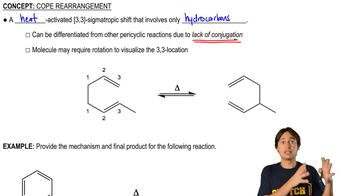What is the major product obtained from the reaction of each of the following compounds with excess HCl?
c. CH3CH2C☰CCH2CH2CH3
 Verified step by step guidance
Verified step by step guidance Verified video answer for a similar problem:
Verified video answer for a similar problem:



 1:01m
1:01mMaster General properties of double addition reactions to alkynes. with a bite sized video explanation from Johnny
Start learning